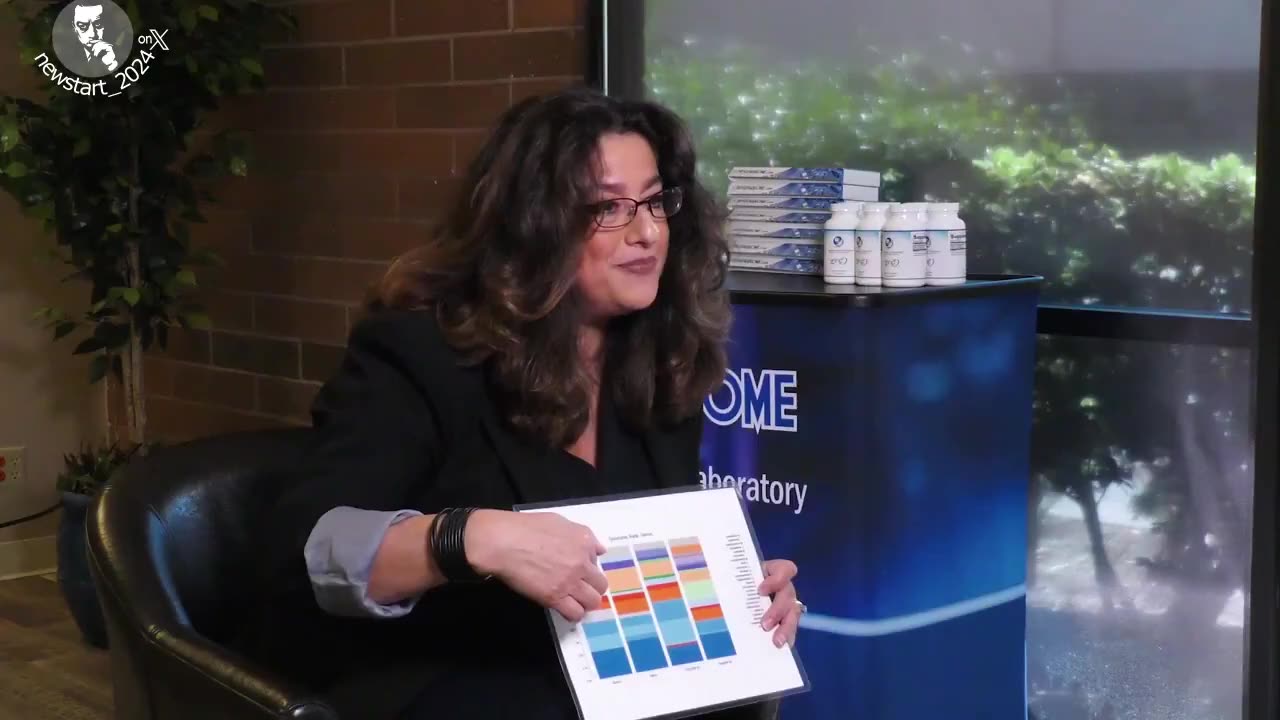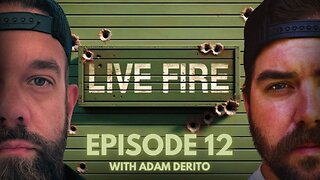Premium Only Content

Dr. Sabine Hazan: The Microbiome & fecal transplants for disease intervention
Dr. Sabine Hazan: "That gut feeling you get when you get attracted to someone, it's your microbiome that is symbiotic to that person. And and we see it when we decide like which husband and wife stools we're gonna take."
"If the husband and wife are and and that's been my trick in a way. If the husband and wife have a happy marriage, the chances of success of my fecal transplant will be much higher than if they don't."
"What happens at the microbiome level of families is actually... I'm gonna show you. This is the family. This is my family portrait. I'm not gonna say who it is, but remember, each color is a group of bacteria. Right. Now you could see there's a lot of similarities in this family."
"So I showed you the picture before that was a lot of different microbiome and everybody's an individual. Different images. Within the family, there are similarities. In fact, when you look at this is the mother, father, child 1, child 2. We won't say which child."
"You know, you will see that there's similarities between husband and wife, which is fascinating. I've been married to my husband for 26 years. Right? Yes. We're resembling each other."
"You see it with with couples that have been married for so long. Yes. They start resembling. They start talking the same. In fact Animism. Everything. Everything."
"Now when you apply this to disease and I'm gonna show you a case of autism. So when you apply this to disease, okay? And you have what we call the Shannon index, right? So the Shannon index is your index of diversity. The more diverse you are the healthier you are."
"Now this is a mother, This is child 1, child 2, child 3 and you can see child 2 and child 3. Child 1 and 2 are actually quite identical and child 3 is not and that kid has a this has a disease. So and I'll I'll kind of show you others. This is, so this is the same thing, mother, child, and this child actually has Crohn's disease and you can see the overgrowth of the bacteria."
"Now this is a kid that we did something to change the microbiome, to in order to improve his Crohn's disease and to see if what we did improved Crohn's disease, and this is the microbiome after. So this correlated with his improved colonoscopy."
"It it correlated with his fecal calprotectin, which is the marker for Crohn's disease. If you look at the Shannon index before we did what we did, it was 2.9 and then after we did what we did it went to 4.9 almost matching the mother."
"And I like to compare that to planet earth, right? So if you remove, you have a beautiful garden again and you've got trees and you've got plants and roses and everything and then you start chopping off a couple trees and then a couple flowers. Well the bees don't have anywhere to go and the birds don't have anywhere to go."
"And pretty soon, you have a desolate area that's full of disease and microbes because you've removed all the beautiful creatures and the beautiful planet that was inhabiting. So it's the same thing at a microscopic level in your gut. The more you kill off all the bacteria little by little, you're left with a few bacteria that are, you know, creating the disease."
Full episode:
https://www.youtube.com/watch?v=6N9selCrlJY
-
 3:00:24
3:00:24
I_Came_With_Fire_Podcast
11 hours agoHalf the Gov. goes MISSING, Trump day 1 Plans, IC finally tells the Truth, Jesus was NOT Palestinian
42.7K26 -
 4:11:49
4:11:49
Nerdrotic
14 hours ago $36.69 earnedThe Best and Worst of 2024! Sony Blames Fans | Batman DELAYED | Nosferatu! |Friday Night Tights 334
179K32 -
 7:55:51
7:55:51
Dr Disrespect
18 hours ago🔴LIVE - DR DISRESPECT - WARZONE - SHOTTY BOYS ATTACK
229K32 -
 1:30:23
1:30:23
Twins Pod
17 hours agoHe Went From MARCHING With BLM To Shaking Hands With TRUMP! | Twins Pod - Episode 45 - Amir Odom
141K31 -
 1:02:30
1:02:30
Exploring With Nug
19 hours ago $4.20 earned2 Duck Hunters Missing After Kayak Capsizes!
63.6K4 -
 46:48
46:48
Mally_Mouse
12 hours agoLet's Hang!! -- Opening Christmas gifts from YOU!
74.4K1 -
 44:55
44:55
Athlete & Artist Show
20 days ago $2.07 earnedNHL 4 Nations Snubs, Was Hawk Tuah Coin A Scam?
71.1K -
 33:47
33:47
Stephen Gardner
18 hours ago🔥Pentagon Whistleblower UNLEASHES on Biden and Obama!
127K281 -
 2:20:30
2:20:30
The Dilley Show
19 hours ago $28.77 earnedRoger Stone in Studio plus Q&A Friday! w/Author Brenden Dilley 12/27/2024
102K22 -
 1:57:02
1:57:02
The Charlie Kirk Show
17 hours agoThe Great H-1B Battle + AMA | Lomez | 12.27.24
190K297